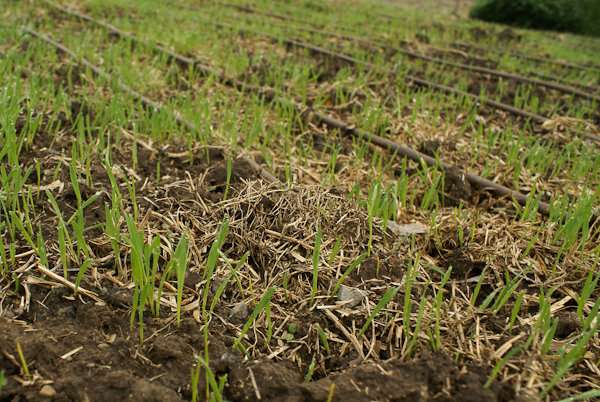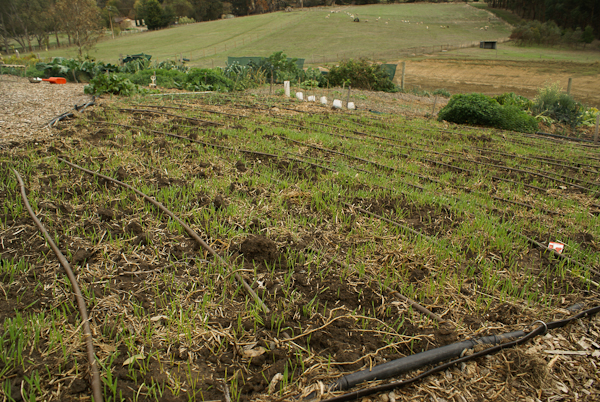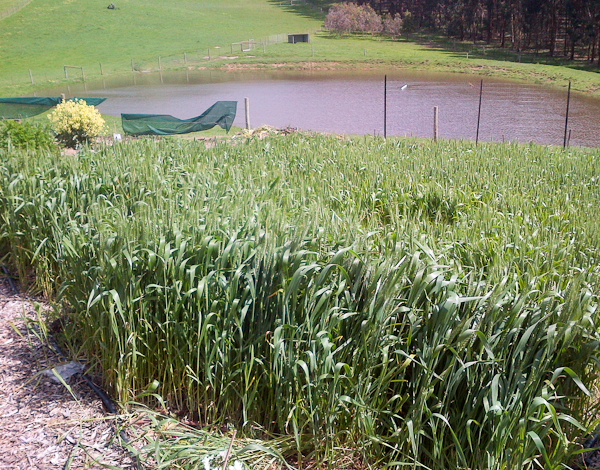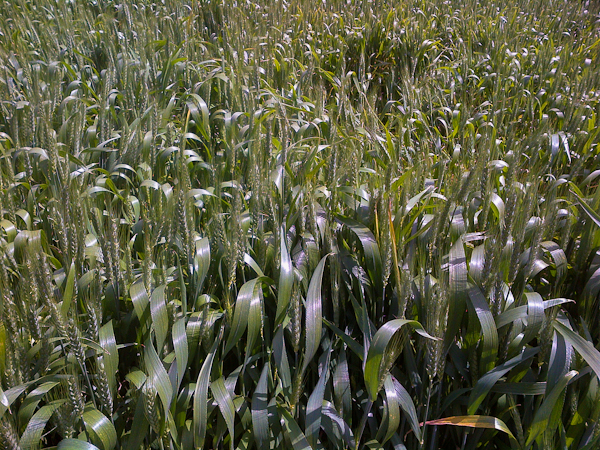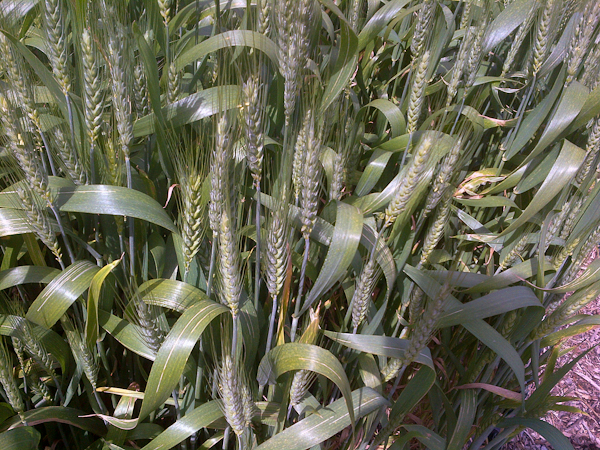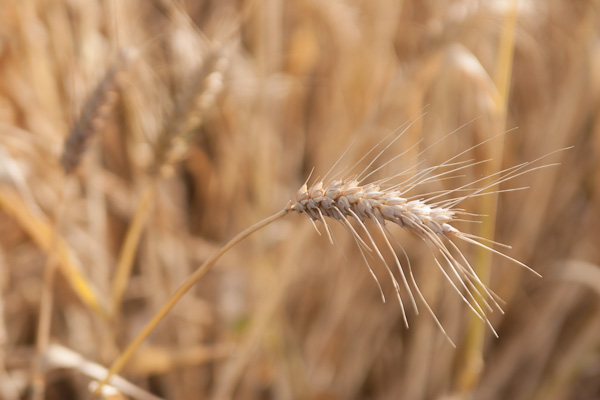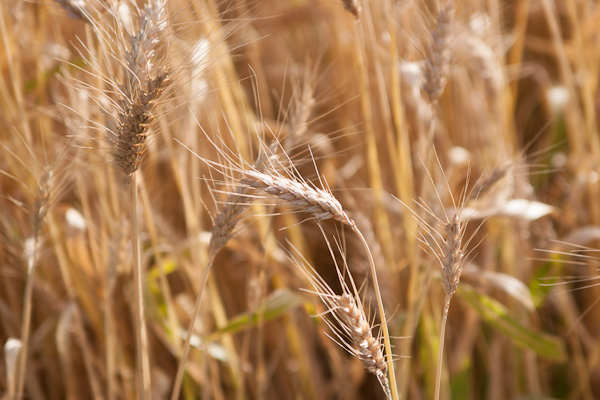I’ve been interested in growing wheat for a long time – it just seems to be something you should do if you’re into baking and doing things ‘from scratch’ so with winter rains here and the offer of a spare patch in my mums veggie garden if I helped clear it, I have just sown my first crop! As you’ll see, this is just a test patch for now with perhaps 20 square meters of land. If it works out, I can use a much larger patch for planting. We just scattered the wheat by hand (broadcasting) so it isn’t in nice neat rows or anything and we just used whatever variety the local health food shop sold for sprouting.
I have a lot to learn but here’s a few useful facts I’ve uncovered:
- Wheat yield per acre varies a lot depending on irrigation, variety, soil, climate etc but can be in the order of 1.5t per acre which is around 370g (2/3lb) per square meter. Depending on usage, a person might need 20kg (40lb) of grain for a years supply. This means to be completely self sufficient you’d want around 55 square meters sown with wheat per person in the household. Ideally wheat should be rotated instead of planting the same patch every year, so you’d want to either use the patch for something else the year after or have several patches you plant out in turn. Of course you don’t have to grow your own entire years supply – I’m going to be happy if I get enough for some loaves and pizzas out of our first harvest.
- I found suggestions that it is good to plant multiple varieties together. If some varieties are less resistant to certain pests or diseases there’s a reduced risk of losing a whole crop.
- Seeds should be sown about 5cm (2in) deep. You can scatter the seeds over raked soil, then fork or rake them in to around that depth. They need water straight away, then at least once per month if it isn’t raining.
- Wheat germinates in around a week and is ready to harvest after 5-6 months. It’s ready to harvest when the grains are hard.
- Different wheat varieties, surprisingly called spring or winter wheat, are be sown in winter or spring. Winter wheat needs a cold period to germinate properly. Winter wheat has more gluten than spring wheat, so it would make stretchier doughs that hold their shape and rise more.
- There are also ‘red’ or ‘white’ varieties, red varieties apparently having a more prominent ‘whole grain’ taste than white varieties which are more mild in flavour.
4 months later
The wheat has grown well through winter and now has lots of decent sized ears! I expected it to be a bit taller but as can be seen, most plants are only knee height. Maybe this is the variety we bought, or maybe it will continue to grow?
6 months later
The wheat has started to dry out! The ears are starting to sag and the grains are almost crunchy when you bite into them (and they taste great). We are harvesting next weekend.

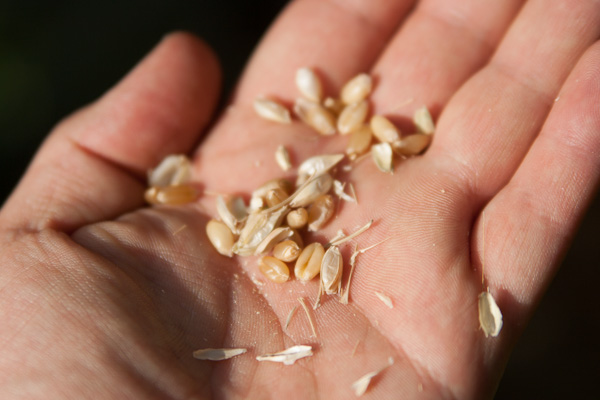
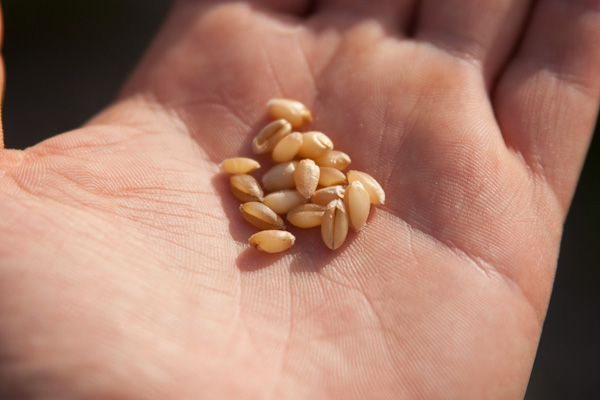
More reading…
Growing grains (great resource)
